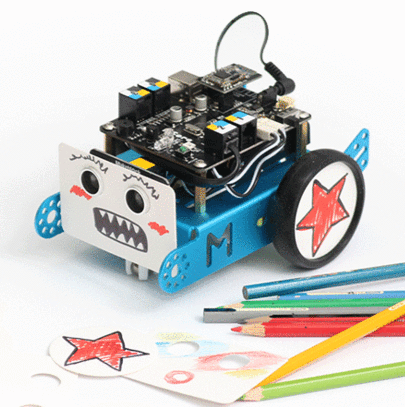

The Maker Movement is having a breakout year in China. It was obvious at Maker Faire Shenzhen, a large, bustling celebration this July that was driven in part by government sponsorship. SEEED Studio’s Kevin Lau, the executive producer of Maker Faire Shenzhen who organized hundreds of Makers across four city blocks, said it was 10 times larger than 2014.
China’s premier, Li Kequiang, has focused on economic reform. During a visit to a Shenzhen Makerspace in January, he declared that “Makers with creative ideas should be helped to set up their own businesses.” The deputy mayor of Shenzhen also spoke about this emerging opportunity: “Shenzhen is to be a city built for Makers.” The government wants to put together an entrepreneurial ecosystem for Chinese Makers that supports startups and small businesses. The prototype for this new generation of entrepreneurs could be Jasen Wang of Makeblock.
Wang is a soft-spoken engineer with a gleam in his eye. Five years ago, after finishing his master’s degree, he came to Shenzhen to start a hardware company. In 2011 he founded Makeblock, which produces construction kits that look like wholly reimagined Erector sets, and was accepted into the first class of companies in the Shenzhen-based incubator, HAX Accelerator. He ran his first Kickstarter campaign in 2013, raising $185,000. Last year, Wang raised $6 million from Sequoia Capital and this year expanded his team from 10 to 90 people, adding expertise in manufacturing, software development, and design.
Makeblock consists of aluminum beams, mechanical components, electronic modules, and features an Arduino-compatible controller and standard sensors. “We combine a lot of new technology, including open-source technology,” explains Wang. Makeblock offers kits for building a musical robot, an XY-Plotter, and even your own 3D printer. The products are well designed, colorfully packaged, and competitively priced.
Wang showed me a new Makeblock product that he was excited about: Mbot, an educational robot for kids, which offers a Scratch-like programming environment to control an Arduino-compatible robot. The Kickstarter campaign for Mbot wrapped up in May, raising $285,000 from 2,500 backers. Wang believes the $75 kit is “affordable for every kid so they can learn both robotics and programming.” Mbot comes in two colors, blue and pink, which will please some and infuriate others.
Maker Faire Shenzhen was full of Makers who had run successful Kickstarters, not only to generate capital but also to market their products. I would bet that most of their backers are not from China. What impressed me the most, however, was how quickly they can expect to deliver a product after their campaigns are funded, by tapping into Shenzhen’s manufacturing capabilities. Wang planned to ship Mbot a month or two after the campaign closed. Most Americans who run hardware campaigns on Kickstarter take around 18 months to manufacture and fulfill a product — if they are lucky.
Wang says that Maker Faire Shenzhen exposed more Chinese to the Maker Movement, and adds that they sold a lot of Mbots during the Faire. “We have a lot of new customers because parents who never heard of ‘Maker’ now know what ‘Maker’ means, and they understand that this is important for their kids and themselves.”
As part of Shenzhen’s Maker Week, Makeblock held a 48-hour robotics competition. The theme was “Lyre-Playing, Chess, Calligraphy, and Painting,” and a dozen teams were brought to Shenzhen and provided with all the Makeblock components they needed to build a project. Teams came from as far as Utah and Italy, and several built variations of drawbots — one was a watercolor bot, another splattered paint in creative ways. The winner was an Italian team called /dev/null, which built a Light Saber Chessbot, a two-foot tall chess piece whose movement can be directed by a laser pointer. The teams demonstrated ingenuity and teamwork, and that you can build almost anything with Makeblock.
The original Erector set was created by A.C. Gilbert who believed that if children are given the right tools, they will educate themselves. Gilbert was inspired by the girders hoisted in the air to build skyscrapers in New York City in the early 20th century. Wang’s Makeblock, which integrates physical and digital modules, is no doubt inspired by Makers who are furiously building things in Shenzhen in the 21st century.
Makeblock products are available in the Makershed.
ADVERTISEMENT







